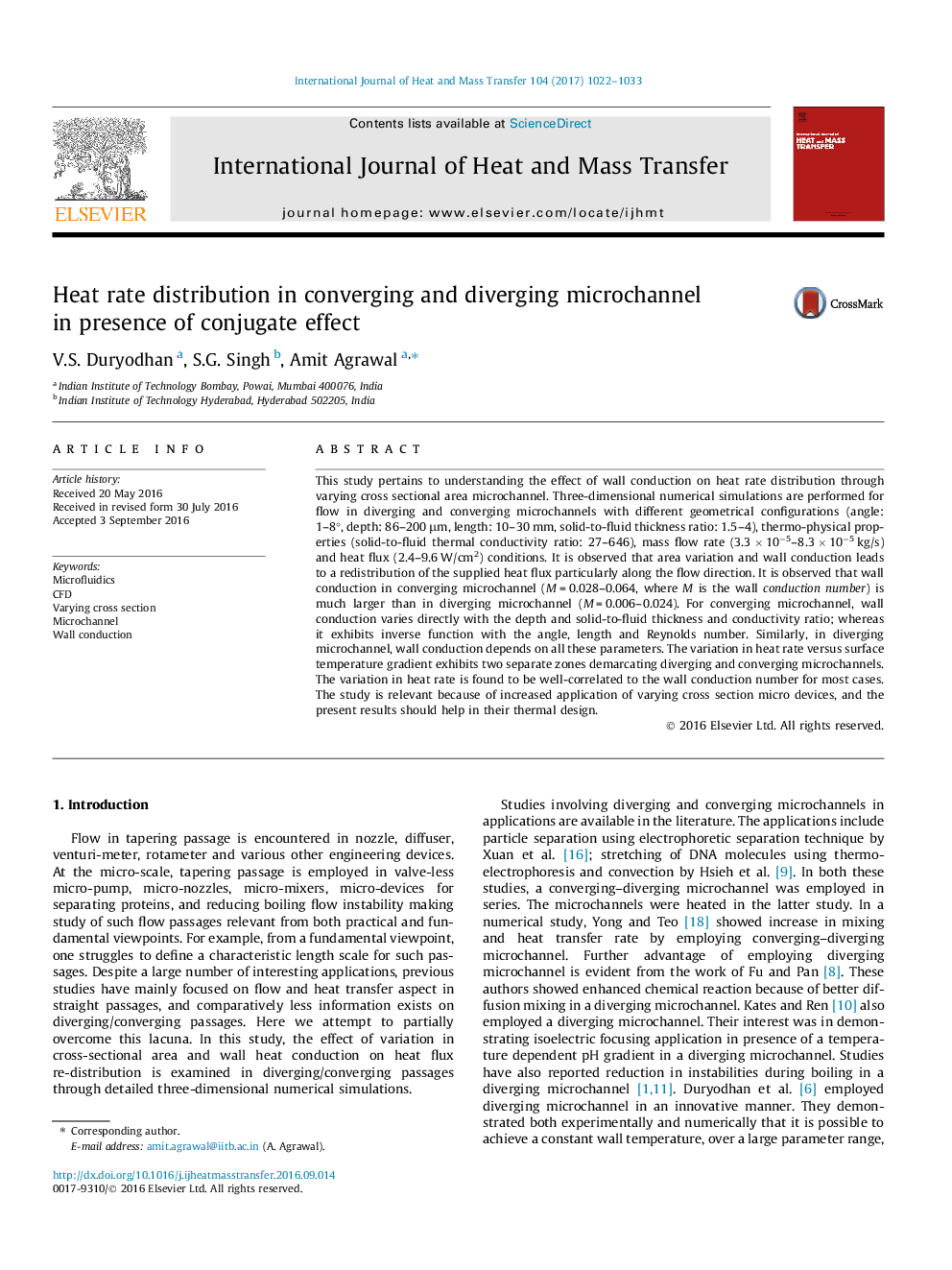| Article ID | Journal | Published Year | Pages | File Type |
|---|---|---|---|---|
| 7055067 | International Journal of Heat and Mass Transfer | 2017 | 12 Pages |
Abstract
This study pertains to understanding the effect of wall conduction on heat rate distribution through varying cross sectional area microchannel. Three-dimensional numerical simulations are performed for flow in diverging and converging microchannels with different geometrical configurations (angle: 1-8°, depth: 86-200 μm, length: 10-30 mm, solid-to-fluid thickness ratio: 1.5-4), thermo-physical properties (solid-to-fluid thermal conductivity ratio: 27-646), mass flow rate (3.3 Ã 10â5-8.3 Ã 10â5 kg/s) and heat flux (2.4-9.6 W/cm2) conditions. It is observed that area variation and wall conduction leads to a redistribution of the supplied heat flux particularly along the flow direction. It is observed that wall conduction in converging microchannel (M = 0.028-0.064, where M is the wall conduction number) is much larger than in diverging microchannel (M = 0.006-0.024). For converging microchannel, wall conduction varies directly with the depth and solid-to-fluid thickness and conductivity ratio; whereas it exhibits inverse function with the angle, length and Reynolds number. Similarly, in diverging microchannel, wall conduction depends on all these parameters. The variation in heat rate versus surface temperature gradient exhibits two separate zones demarcating diverging and converging microchannels. The variation in heat rate is found to be well-correlated to the wall conduction number for most cases. The study is relevant because of increased application of varying cross section micro devices, and the present results should help in their thermal design.
Related Topics
Physical Sciences and Engineering
Chemical Engineering
Fluid Flow and Transfer Processes
Authors
V.S. Duryodhan, S.G. Singh, Amit Agrawal,
